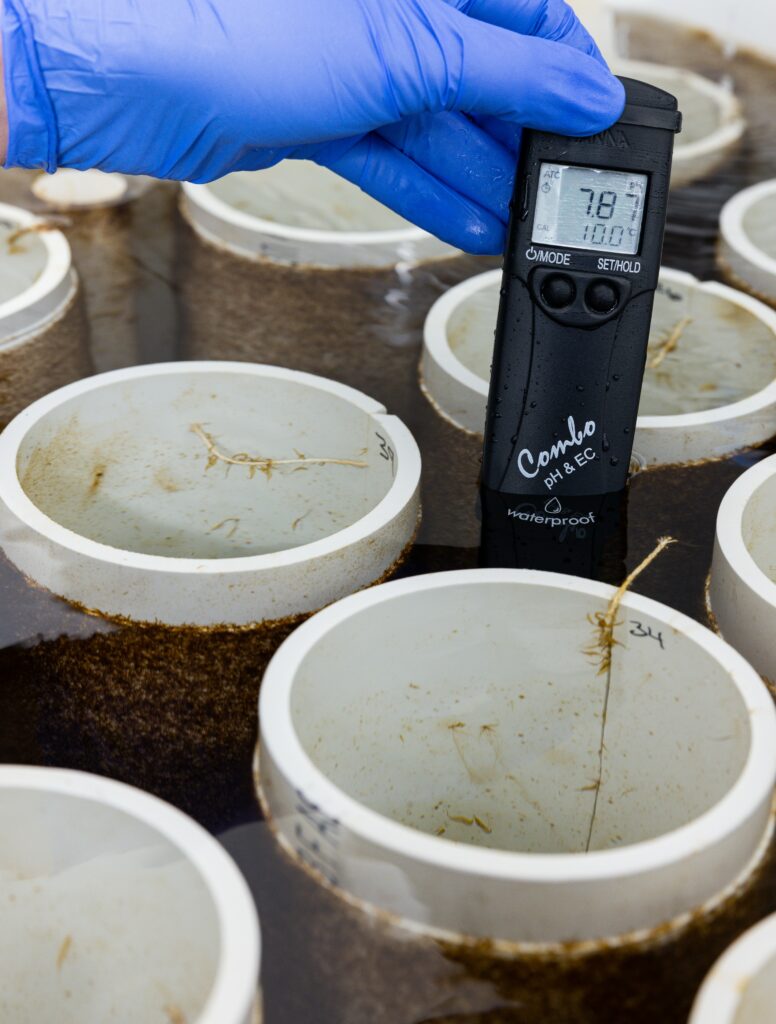Back to: Propagating Seedstring from Gametophytes
Once spools are ready for outplanting, they will need to be transported either by farmers or shipped. There are three important things to consider: moisture, temperature, and avoiding contact with fresh water. Transport the kelp in a moist environment to prevent the juvenile blades from drying out or sticking to each other. This can be achieved by wrapping the spool in paper towels soaked in seawater or laying some sort of damp cloth over the spools in a cooler. Just before a seed spool is outplanted, allow it some time to soak in the seawater so the blades can loosen up and unstick.
Keep the seed spools chilled, ideally between 10–12°C. The juvenile kelp is more tolerant to temperature changes than it is to drying out, so slightly higher temperatures during transport do not normally result in seed death. Lastly, the kelp should not come into contact with any freshwater. Freshwater will cause the blades to bleach and turn green very quickly, and the blades will not recover. Because of this, place any cooling packs at the bottom of the container. If they are placed at the top, you risk condensation dripping down onto the spools.
